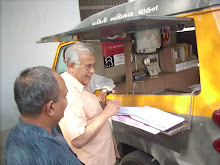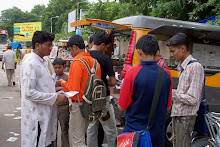The Indian Express: Mumbai: Tuesday, August 21, 2018.
The stress in
the farm sector seems to have intensified, with banks reporting a 38.2 per cent
increase in default of loans contracted by farmers in the financial year ended
March 2018.
Despite the
farm loan waiver schemes offered by several states and the hike in minimum
support price (MSP) by the Centre, the Reserve Bank of India (RBI) data says
loans defaults or non-performing assets (NPAs) in the farm sector have gone up
by over Rs 23,000 crore to Rs 83,153 crore by March 2018 from Rs 60,161 crore
in March 2017, the RBI said in its reply to an RTI application filed by The
Indian Express.
Though the
hike in MSP came much later, the proposal was in the air for quite some time
and farmers were resorting to agitations in several states including Tamil
Nadu, Maharashtra, Rajasthan and Madhya Pradesh for better returns amid the
government’s mission to double the farmers’ income by 2022. The RBI’s RTI reply
provided data which shows that banks have reported incremental bad loans of
close to Rs 50,000 crore since April 1, 2014, when farm sector NPAs were Rs
34,082 crore.
However,
according to the central bank figures, agriculture loans of banks have showed
only a small rise of 4.39 per cent to Rs 11,63,253 crore in March 2018 from Rs
11,14,313 crore in March 2017. While farm loan growth showed a marginal rise,
bad loans in the segment zoomed as loan waivers by state governments acted as
incentives for farmers to default.
RBI Governor
Urjit Patel had earlier cautioned against the increasing farm loan waivers by
state governments stating that the impact of any loan waiver is on the balance
sheet of lending institutions, finances of states and interest rates. “There
are several conceptual issues… I think it undermines an honest credit culture.
It impacts credit discipline. It plugs incentives for future borrowers to
repay. In other words, waivers engender moral hazard,” Patel had said.
The RBI said
SBI, Canara Bank, HDFC Bank, PNB and Bank of Baroda topped the list of banks
which showed the highest farm loan defaults.
However,
while admitting that loan disbursals to farmers showed a marginal increase,
bankers said there was no unusual jump in bad loans from the sector. “It’s
normal. There’s nothing unusual about the rise in NPAs. The sector has always
showed some bad loans in the last several years,” said an SBI official.
However, a section of bankers said the RBI should recheck the delinquencies in
the sector. “There’s a possibility that double counting would have happened.
Banks extend loans to microfinance institutions and non-banking finance
companies (NBFCs) which, in turn, extend the funds to the farm sector. NBFCs
report their loan exposure and NPAs separately. Banks also do it separately,”
said Ramnath Pradeep, former chairman and managing director of Corporation Bank.
According to
an RBI study, around 70 per cent of agri loans are crop loans, which account
for nearly 67 per cent of the outstanding loan amount. A majority of these crop
loan recipients (38 million) had outstanding loans up to Rs 1 lakh and their average
loan amount was Rs 44,088. The loans for investment in equipment (e.g.,
tractors) had a share of nearly 27 per cent and 23 per cent in the number of
accounts and the loan amount respectively.
Of the total
77 million agriculture credit accounts, about 39 million accounts were held by
small and marginal farmers having land holding up to 2 hectares. For small and
marginal farmers, crop loans constituted over 75 per cent of their total loan
amount. The size of the crop loans is normally small around 74 per cent of crop
loan accounts of small and marginal farmers were up to Rs 1 lakh, the RBI study
says.
The Centre
has decided to fix the MSPs of at least 150 per cent of the cost of production
for all kharif crops for the sowing season of 2018-19. This rise in MSPs for
khari crops, which is much larger than the average increase seen in the past
few years, will have an impact on food inflation and headline inflation, the
RBI said.















































































